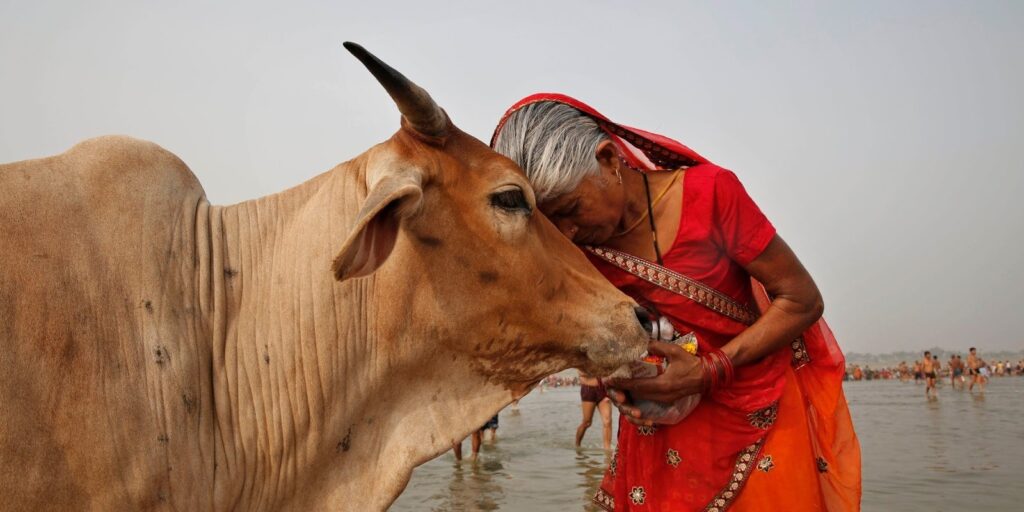Gaumata, or the sacred cow, holds a revered place in Indian culture, spirituality, and daily life. For centuries, the cow has been regarded as a symbol of divinity, abundance, and selfless service. The significance of Gaumata extends beyond religious beliefs and encompasses economic, environmental, and ethical aspects of human civilization.
Spiritual and Religious Significance
In Hinduism, the cow is considered a sacred being, embodying divine qualities. It is believed that all the 33 crore deities reside within the body of a cow, making her an object of veneration. Lord Krishna, one of the most beloved deities, is often depicted as a cowherd (Govinda), signifying the deep-rooted spiritual bond between humans and Gaumata. Many Hindu scriptures, including the Vedas and Puranas, emphasize the importance of protecting and worshiping cows.
Economic and Agricultural Importance
From an economic perspective, cows contribute significantly to rural livelihoods. Their milk is a vital source of nutrition and income for millions of households. Dairy products such as ghee, curd, butter, and paneer form an essential part of the Indian diet. Furthermore, cow dung is widely used as an organic fertilizer, biofuel, and in the production of natural pesticides, reducing dependence on chemical-based alternatives. Traditional Indian agriculture thrives on cow-based farming, ensuring soil fertility and sustainable cultivation practices.
Environmental Benefits
The presence of Gaumata plays a crucial role in ecological balance. Cow dung and urine have medicinal properties and are used in Ayurvedic treatments and organic farming. The natural manure derived from cow waste rejuvenates soil health, enhances crop yield, and prevents soil erosion. Additionally, cow-based products such as gobar gas serve as renewable energy sources, promoting a sustainable and eco-friendly lifestyle.
Moral and Ethical Perspectives
Gaumata symbolizes selfless giving, as she provides milk and nourishment without expecting anything in return. This principle teaches humans the value of compassion, gratitude, and respect for all living beings. Protecting and caring for cows is not just a religious duty but a moral responsibility that reflects humanity’s kindness and ethical treatment of animals.
Conclusion
Gaumata is more than just an animal; she represents a holistic way of life that integrates spirituality, economy, environment, and ethics. The reverence for cows in Indian culture is not merely symbolic but deeply rooted in the wisdom of sustainability and harmonious coexistence. By protecting Gaumata, we uphold the values of compassion, prosperity, and environmental balance, ensuring a healthier and more enlightened society for future generations.


